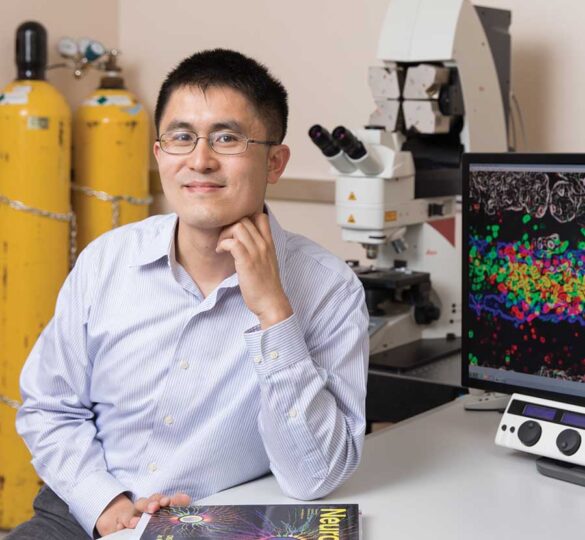Focus on Dr. Xin Duan’s Laboratory: Restoring Vision
Xin Duan, PhD is a Professor of Ophthalmology at the UC San Francisco Weill Institute of Neuroscience, where in 2017 he received a Trailblazer Award in Neuroscience.

The research goals of Dr. Xin Duan’s laboratory are to reconstruct neural circuits and restore normal function following neuronal injury. Dr. Duan received his education and training at Tsinghua University, Beijing (BS degree in Biological Sciences), Johns Hopkins University in Baltimore (PhD in Neuroscience), and Harvard University in Cambridge (Neuroscience).
In 2019, Dr. Duan was selected by the Catalyst for a Cure (CFC) Scientific Advisors as one of four principal investigators in the Catalyst for a Cure Vision Restoration Initiative, with a goal of restoring functional vision in those who have lost sight due to glaucoma. The scientists meet regularly with their advisors, who have been thrilled with the team’s research progress to date, noting their “overwhelming research advancements” (Jeffrey L. Goldberg, MD, PhD) and their “ability to marshal so many investigative tools, all with high impact, that it’s remarkable and unmatched by other research teams” (David J. Calkins, PhD).
With his fellow principal investigators Anna La Torre, PhD (UC Davis), Yang Hu, MD, PhD (Stanford), and Derek Welsbie, MD, PhD (UC San Diego), Dr. Xin Duan has been hard at work on optic nerve regeneration, finding innovative ways to protect and restore vision. The two main goals of the Catalyst for a Cure team are to protect the optic nerve cells that a glaucoma patient still has (neuroprotection) and to find ways to successfully replace nerve cells that have been lost (regeneration).
“My lab is dedicated to understanding how eye neurons regenerate and rejuvenate their axons,” Dr. Duan told us, “and we have made significant progress to understand how eye neurons can eventually regrow to the brain to form new connections. As a team we are using models of glaucoma to study how different types of cells respond to glaucomatous conditions, and we observed that different types of ganglion cells respond differently to injury from glaucoma. We found some cells to be more resistant to injury, and we are seeking ways to help other cells to also be more resilient to prevent vision loss.”
Learn more about the Catalyst for a Cure Vision Restoration Initiative. »
Posted on April 14, 2022; last updated on July 14, 2025.